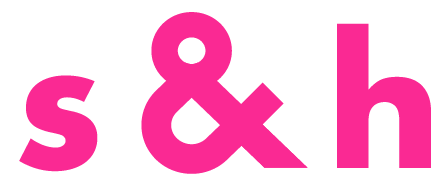The Story of Us: Cultivated in Culture
Earlier this year, a few folks from sparks & honey were interviewed about the story of s&h. We have taken excerpts from that interview and translated it into a 5 part story of s&h. A special thank you to Kendra Clarke, VP Data Sciences; Paul Butler, Chief Operating Officer; Camilo LaCruz, Chief Strategy Officer; Kristin Cohen, Head of Marketing and Business Development; Jared Alessandroni, Chief Technology Officer and Laura Chiavonne, Managing Partner Transformation for being part of the interview.
The Beginning....
“When Terry asked me to join him in setting up s&h in 2012,” recalled Camilo, “his vision was to build an organization that quantified culture. Much like you do in the stock market, we would identify portfolios of areas where to invest and track how they performed over time. I would argue that’s still pretty much the basis of the organization.
“Q™ didn’t exist at that time in terms of the name, but the idea of a cultural intelligence system and nurturing the relationship between humans and machines was there from our inception:
NEW YORK, March 12, 2012 /PRNewswire/ -- sparks & honey, based in New York City, opened its doors on March 1, 2012…
sparks & honey disrupts the traditional models by which market research, creative development and media distribution are executed. Through its Wave Branding platform, sparks & honey identifies and maps emerging cultural waves through the use of machine learning systems, algorithms and human insights. As cultural waves are identified, sparks & honey constructs customized cultural portfolios for its clients and leverages a proprietary next generation, real-time engagement engine to distribute culturally relevant brand content.
“Starting in those early days,” continued Camilo, “we tracked ‘signals’ from ‘fast culture’ and ‘slow culture.’ From a fast culture point of view, we found signals in things like social media, articles, and blog posts. From a slow culture point of view, we identified signals in things like academic research, patents, and science. To organize all those signals, we built a taxonomy to quantify culture as a system. We ingested data sources, scored them manually, and ran spreadsheets to produce a taxonomy that captured about twenty trends.
“Now, technology has enabled us to do that at scale and much faster. Today, we process data with a click of a button and currently track trends for 160 different cultural elements, a number that continues to grow. But the basic principle remains the same – we diagnose the cultural zeitgeist and quantify how culture is changing in ways that connect to your specific organization, and we help you make decisions about how to act on that knowledge.”
Swimming to the C
“At the start,” remarked Camilo, “the output of our work was centered on content for marketing channels and thought leadership. Today, we still work with a few clients in the communication space, but they are in the minority. For most clients, we quantify change to help them get ahead of disruption and have a say in transforming their markets. That evolution has taken us upstream into the C-suite where we help revise corporate strategies and spark new innovation pipelines.
“For example, we have helped a CPG company, one of our longest-tenured clients, to evolve the core of their business. In one case, we worked with them to understand their role in nutrition and in specific demand spaces like breakfast. That led to a variety of decisions like repositioning core products and reformatting their packaging for different consumption purposes. In 2016, we also helped them map the ‘dying’ of a core category against culture and define a set of rich spaces for future success.”
“These types of engagements drove our transformation into a technology-led cultural consultancy,” affirmed Terry. “To better serve them, we envisioned a platform with impact well beyond marketing – and an engine that would allow us to understand what makes humans tick, why they make the decisions they make. Building Q™ launched us on a journey of tackling weighty enterprise-wide problems, where we now regularly run up against strategy consultants like McKinsey, Bain, and BCG, and innovation shops.”
“Our edge over those organizations,” pointed out Jared, “is our fusion of human and machine intelligence. Many consultants approach clients with viewpoints on trendy slices of culture and advice on how to ‘build those into this year’s plan.’ Camilo and his team are the only ones who say, ‘Let’s step back and use a standardized set of information to quantify where all of culture is going and then apply our brains to determining how that relates to where you should be going.” The operating system of the organization has been constructed around 8 laws of culture that established the building blocks of the firm.
The Laws of Culture:
Culture is horizontal. It reverberates across industries, communities and nations. Organizations must understand how the world in the horizontal can influence the vertical. Making connections between seemingly divergent signals, industries and themes.
Culture moves at multiple speeds. From emerging memes to societal shifts, culture moves over the long-term and in real time. Both are important.
Culture operates at three distinct levels: Mega, Macro and Micro. Trends can affect culture in different ways (Mega / Macro / Micro), depending on how many people a trend reaches, the voracity of impact, and for what duration of time.
Culture is a chaotic system, but one that can be structured. By leveraging a cultural taxonomy you can put language and structure around culture. Artificial intelligence tools allow you to do that at scale.
Cultural patterns become visible to the trained eye. To understand key shifts you need to examine culture over time. By creating a system to monitor culture daily, you begin to see patterns emerge at the horizontal and vertical. Tracking culture every day gives an organization the muscle memory to notice subtle, novel shifts and emerging patterns in culture.
Culture exists as tensions. A cultural tension exists when there are two opposite forces of a given trend. Neither is “right” or “wrong,” but both significantly shape its evolving definition. Choosing a side, or choosing not to choose, can be very powerful.
Culture requires a perfect partnership between human and big data. Relying solely on big data can lead us to the wrong decision or move us in the wrong direction. Big data needs human analysis and expert opinion to shape the last mile to a given decision.
Culture-centric organizations require augmented humans to work in a world of accelerating change. Artificial intelligence platforms will make organizations better, faster and smarter. The most successful modern organizations will put culture at the center of their organization and create a powerful differentiation by leveraging AI powered platforms.
Terry is the CEO of sparks & honey. His deep understanding of consumer behavior, digital and technology platforms allowed him to architect the sparks & honey model. Before sparks & honey, Terry joined McKinsey & Co in Greater China, working to incubate new startups and Internet companies in Asia.


